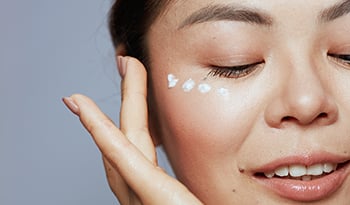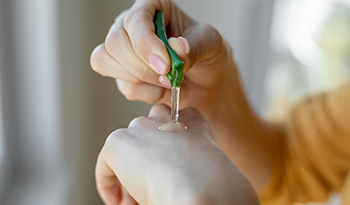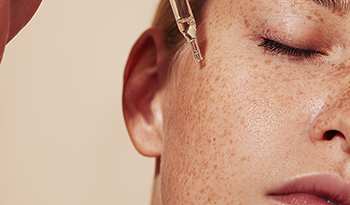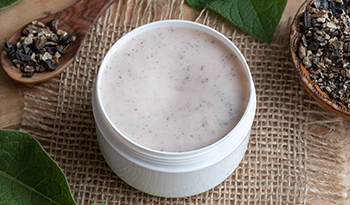5 Active Ingredients That Will Transform Your Skin

With so many skincare products out there, it can be difficult to know which ones to pick, and how to incorporate them into your skincare routine. It’s true that not all products are created equal, and some ingredients have more evidence and research to show that they actually work than others.
As a dermatologist, two of the most frequent questions I get are “How do I take care of my skin?” and “What skincare products should I use?”. There are several things I take into consideration when recommending skincare ingredients. First, everyone’s skin is a little different, so depending on someone’s age, climate, and individual concerns (for example, some people may be more worried about wrinkles, versus acne or hyperpigmentation), there may be some ingredients that are more helpful than others.
For example, a middle-aged woman with aging skin may have different skincare needs than a teenager struggling with acne. However, even though everyone’s skin is different, there are some key active ingredients that have effects that are beneficial for targeting a number of skin concerns. When used consistently and correctly, products with these ingredients can help to achieve brighter, more youthful, healthy-appearing skin.
What Are Active Ingredients?
When we refer to active ingredients in skincare products, we are talking about ingredients that have been shown to have the capability of altering the skin in some way to produce beneficial effects.
One thing to note is that because cosmetic products do not undergo the same rigorous FDA testing as medical drugs, sometimes it can be difficult to know if they truly deliver the results they promise. In addition, sometimes the product packaging, pH, other additives, and vehicle (e.g. ointment, gel, cream) can affect how well the ingredient actually works. Therefore, it’s important to choose trusted brands from reputable sources.
Below, I’ll give you an overview of my favorite ingredients to look for in skincare products, including what benefits they have for the skin, and how to use them correctly.
Retinoids
Topical retinoids are vitamin A derivatives that are some of the most important components of any skincare regimen to help achieve clear, even, youthful skin. Amongst skincare ingredients, retinoids like tretinoin and adapalene have some of the most convincing research evidence to support their ability to treat acne, fine wrinkles, and discoloration of the skin.
Tretinoin is a prescription medication that has to be prescribed by a doctor, but thankfully, adapalene gel is now available over-the-counter in the US, and is marketed under the brand name Differin. All retinoids can cause irritation, dryness, and flaking, but adapalene is generally regarded as a bit gentler than tretinoin, and is also less likely to break down when exposed to sunlight or when mixed with benzoyl peroxide.
Frequent use of a good moisturizer and daily sunscreen (I like Cetaphil) can help minimize these side effects, and only a small, pea-sized amount spread on the entire face is needed. If for some reason adapalene causes too much irritation, cosmetic retinol products such as those containing retinaldehyde, retinol, or retinyl propionate on the ingredient labels may be better tolerated. However, these are less-well studied and regulated, so sometimes it can be tough to know if they work as well. Because some of the retinoids breakdown when exposed to light, they are best applied as part of the evening skincare routine.
For anyone considering using a topical retinoid, it is important to know that they should not be used during pregnancy or breastfeeding.
Vitamin C
Vitamin C is an antioxidant that deserves attention in any anti-aging skincare routine. It works by combating damage and breakdown of the skin’s cellular DNA, collagen, and elastin, which occurs over time due to the skin being exposed to environmental factors in life such as the sun and pollution. Vitamin C is also a crucial factor in how collagen is made and stabilized in the skin. Because it performs all these functions in the skin, it is thought that topically applied vitamin C products can help prevent some of the skin changes that occur as we age, like wrinkles and loose skin. Vitamin C also interferes with one of the enzymes (tyrosinase) that is responsible for making melanin (pigment), so topical vitamin C is often touted as a skin brightener to help minimize brown spots and discoloration.
Sounds like a dream, right? There is a catch. Pure vitamin C (L-ascorbic acid), which is the most active form of vitamin C, does not penetrate the outer barrier of the skin very well, and is also a very unstable compound, meaning that it breaks down easily when it comes into contact with air and light. Because of this, it has to be formulated correctly to maximize the chances that it will have benefit, and it has to come in the right type of packaging.
Topical vitamin C has been shown to be more stable when combined with ferulic acid, which helps lower the pH to a level where it can better penetrate the skin (pH <3.5). Vitamin C has also been shown to be more powerful when combined with vitamin E (which is often listed as tocopherol on the ingredients label). Vitamin E is also an antioxidant, and when combined with vitamin C, can make it four to eight times more powerful.
When looking for a vitamin C product, the ideal concentration is within the range of 10-20%. Higher concentrations can result in more irritation, and lower concentrations may not be enough to work. The ideal storage container for vitamin C is an opaque bottle that light cannot get through. Some experts also think that the opaque glass containers are ideal, because the product is less likely to interact with the glass than it would with a plastic container. Airtight pumps can also help minimize breakdown of the product by preventing exposure to oxygen, although a number of the available products use droppers, which can be nice for precisely measuring out a few drops and applying it directly to the skin.
In general, vitamin C serum is typically recommended in the morning, applied to the skin after cleansing, and underneath sunscreen, so that it can work to fight against daytime exposures in the environment. There are some derms and skincare specialists who even suggest applying it every 8 hours for maximum benefit, although this could potentially become irritating. Others believe that damage from the day continues for hours afterward into the night, and therefore, the people in this camp advocate for applying vitamin C at night. The idea is that by doing it at night, it may give the vitamin C more time to do its work, with less chance of breaking down. I personally prefer to recommend it in the mornings because many people are also using nighttime retinoids, which ideally are applied separately.
Alpha-Hydroxy Acids (AHAs)
Alpha-hydroxy acids (AHAs) are popular skincare ingredients that are frequently recommended in dermatology. Some of the most common AHAs are glycolic acid, lactic acid, citric acid, and mandelic acid. These ingredients are well-studied and have been shown to have anti-aging effects by improving skin tone, texture, fine lines, and hyperpigmentation. In higher concentrations, some of these are even used as superficial and medium-depth peeling agents in dermatology offices. In lower concentrations, such as those you would find in skincare products, the AHAs act as mild chemical exfoliators. Chemical exfoliation with products like these is preferred over rough, abrasive physical exfoliators, which can be too harsh on the skin.
In general, I like using AHAs about three times a week. However, depending on the other skincare products a person is using (such as retinoids, benzoyl peroxide, salicylic acid), sometimes too much irritation and dryness can occur. When this happens to me, I just back off and limit use to once or twice a week, and work on doing really good moisturization and sun protection.
Hyaluronic Acid
Hyaluronic acid (HA) is a molecule that is present naturally in the skin and is responsible for absorbing and retaining moisture into the skin. Because of this, synthetic HA is an ingredient that is often incorporated into moisturizers, because it helps hydrate and “plump” up the skin to give the skin a dewy, healthy glow, and minimize the appearance of fine wrinkles. It’s a great ingredient to look for if dryness or aging skin is a concern.
Niacinamide
Niacinamide (also called nicotinamide) is definitely a favorite ingredient in topical skincare products amongst dermatologists. It is a B3 vitamin that has been shown to have a range of benefits for the skin, including strengthening the skin barrier, evening out skin discoloration and brown spots, calming acne and rosacea, and improving skin texture and wrinkles. It also has anti-inflammatory and antioxidant properties!
Niacinamide is generally very well-tolerated, stable, and can penetrate the skin well. It can be incorporated into either the morning or evening skincare routine. There are rumors that if niacinamide is combined with vitamin C, the two can become inactivated or react to form nicotinic acid (niacin), which can cause unwanted flushing. This theory came about from some research that was done in the 1960s, however, now it is generally felt that using both is unlikely to cause issues. I would, however, recommend buying them as separate products, since usually vitamin C needs to be formulated at a lower pH than nicotinamide.
I hope you found this skincare ingredient overview helpful, and that you can use it as a guide to finding the best products to incorporate into your skincare routine.
DISCLAIMER:This Wellness Hub does not intend to provide diagnosis...













































































 Table of Contents
Table of Contents















